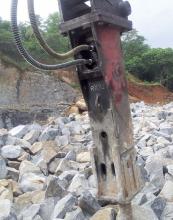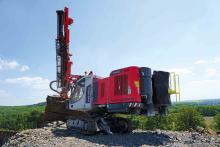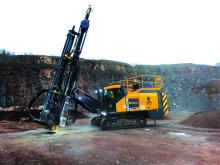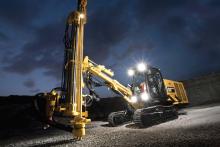Fitted with a Cat C7.1 Stage IV emissions engine, the
The DX800’s dual pressure compressor is said to be key to its improved fuel economy. Once drilling is complete the system drops air receiver tank pressure to the level of three bars, leaving the compressor idle when air pressure is not needed. Once the drilling continues, the air pressure is raised again. The model’s engine life is also said to be enhanced by its automated engine shutdown capability. When the work of the rig is finished, the operator is able to leave the engine running and the automated system will shut it down after a couple of minutes once the temperature has evened out. Long-term engine durability is helped by not shutting the engine down abruptly on a full load.
The redesigned drill rig uses new and relatively large emission filters, said to have necessitated some design changes because the filters are mounted on the engines, raising the profile of the back of the rig. The DX800’s urea tank is in front of the engine, at the base of the boom where the drill bit grinder was previously located. The grinder is now situated on the left flank of the machine.
The new Ranger DX800 now comes complete with other customer-focused features. The most visible being the light grey colour of the cabin which gives the Ranger the familiar Sandvik look. In order to improve operations, the winch is now operated by remote control – something that is said to have been particularly well-received by operators. The Ranger is now available with a full radio control system; the same system which is used on the new Dino DC400Ri drill rig.









